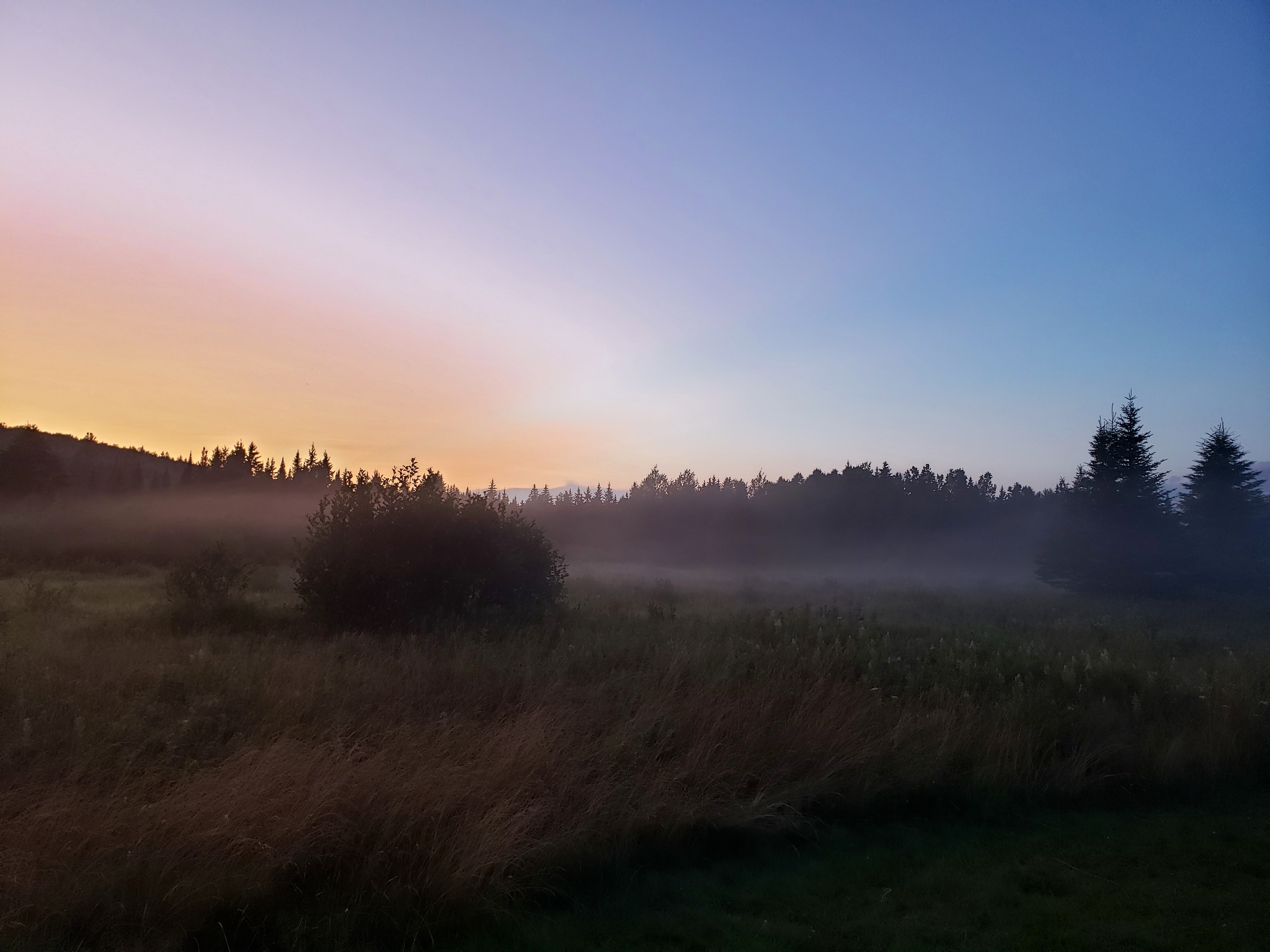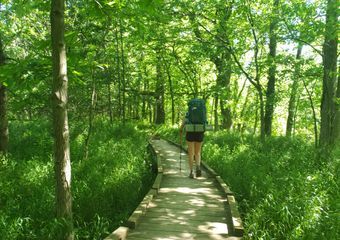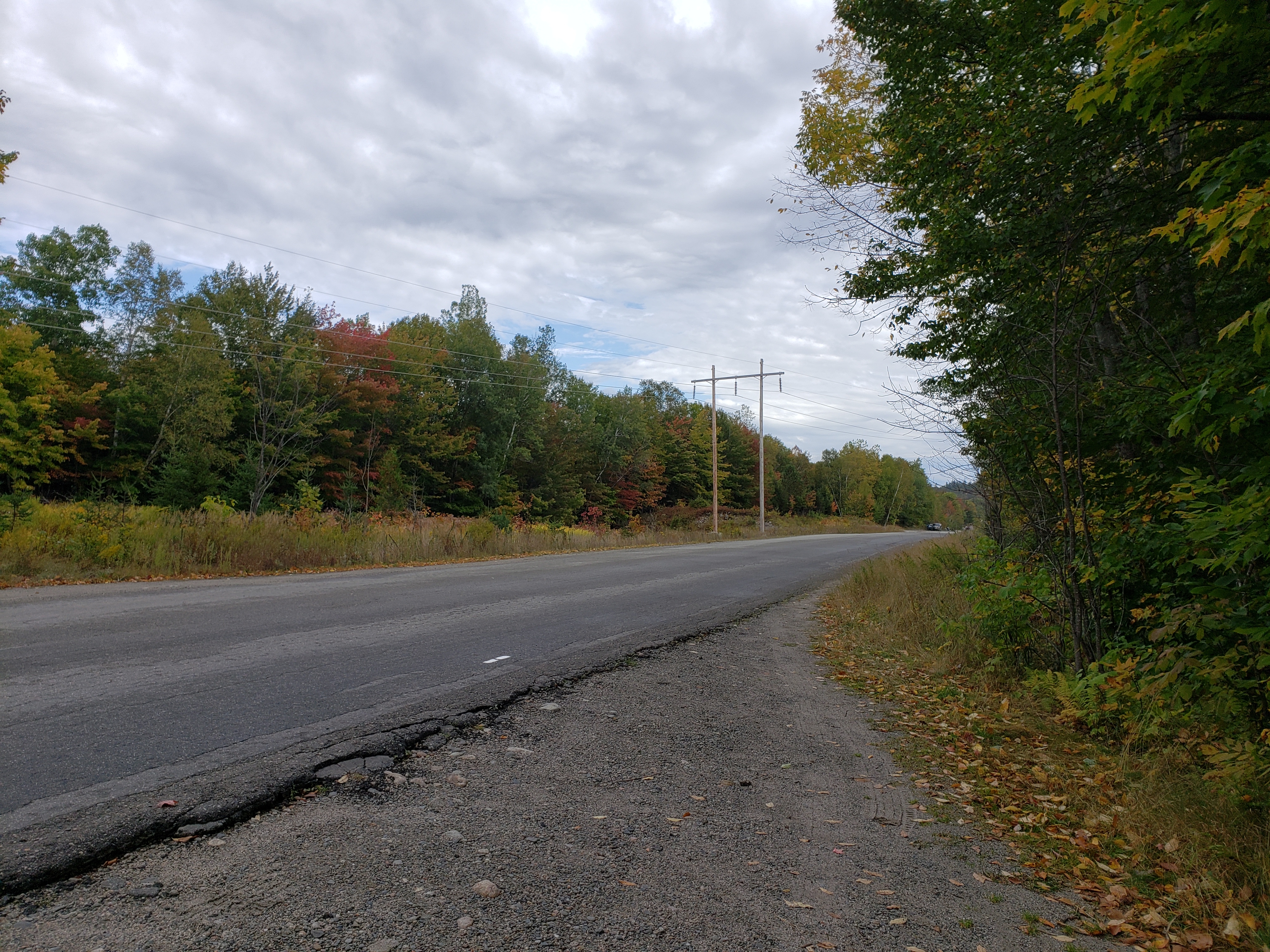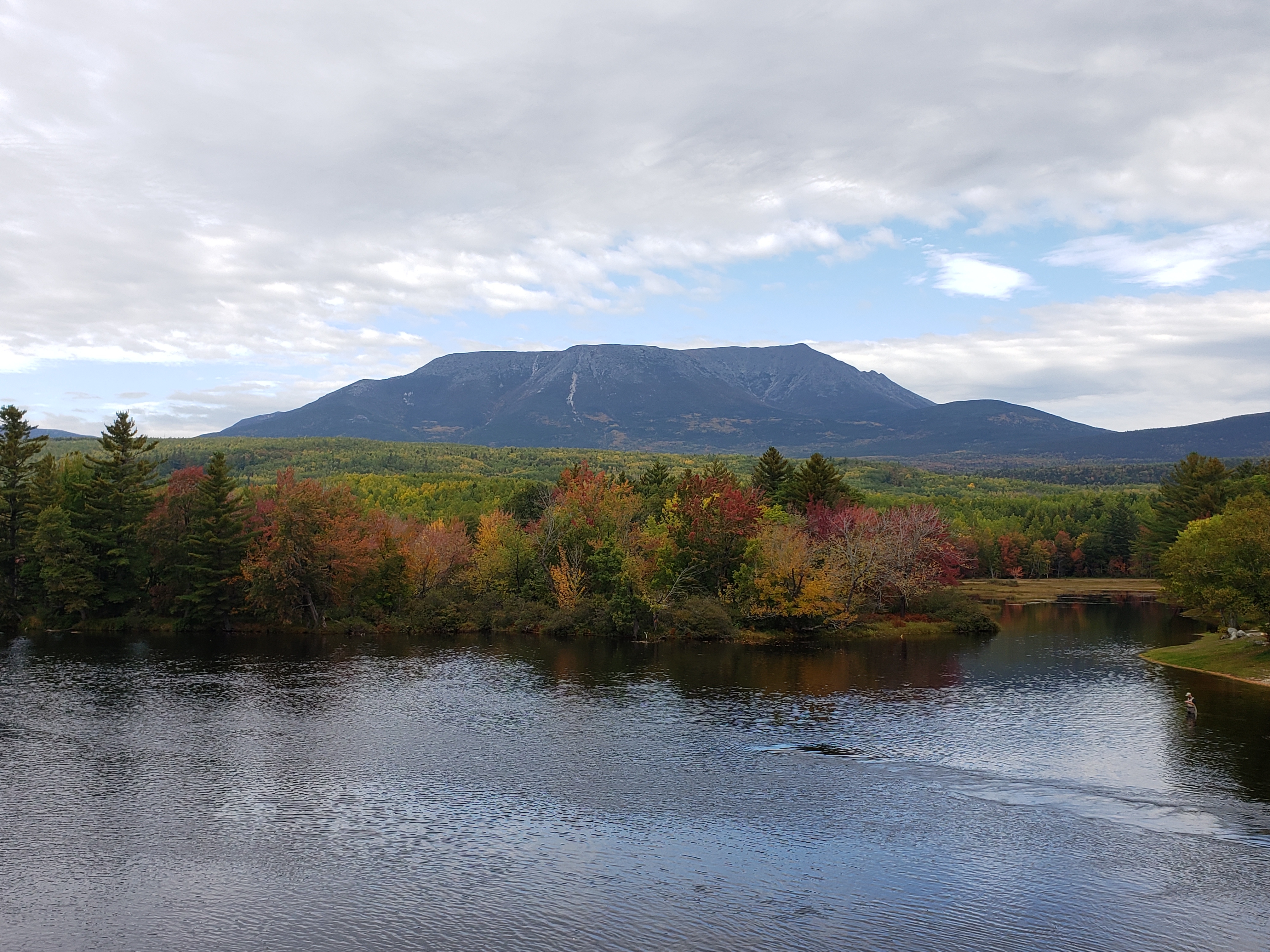How to Finish the Appalachian Trail in 12 Easy Steps
Step 1: Pull a Muscle and Hike 464.8 Miles with Said Injury
Definitely get an injury. The Appalachian Trail is easy-peasy so you definitely need to beef things up. Add a challenge. Throw a wrench in the plan. Make things interesting. I myself chose to go for pulling a groin muscle but don’t hold yourself back; your options are limitless.
Being stubborn is generally viewed as a negative trait but I like to view it as determination on steroids. I have a tendency to dig my heels in. I wanted to hike every last mile of this trail so badly that, instead of coming off the trail to heal, I powered through. I started to compromise everything: miles, fun, hiking with friends, you name it. I literally cried every day in New Hampshire. I was in more pain than I was willing to admit but just kept going. To be clear, I don’t regret it. Even the thought of finishing it next year just somehow didn’t seem sufficient. I want to stress that it’s not because I wanted the “thru-hiker” tag. It seems a million years ago when that seemed to be of any importance to me. I just felt deeply connected to the trail (Corny? Whatever, also true.) and I just wasn’t willing to let it go. It was like a relationship that I wasn’t ready to be over.
Step 2: Have an Epically Bad Fall That Finally Forces You Off Trail
As I’ve written about in a previous post, an impressive fall on my descent down Mount Madison was my poor groin’s final straw. I was unable to climb stairs, let alone mountains. I went home in tears.
Step 3: Try to Go Back on Trail Too Soon
I was told six weeks to recover. I gave myself two weeks and packed up my car for Maine. The plan was for me to drive myself up and park at a trailhead by Andover, Maine. I’d (temporarily) skip over the last of the Whites and over Southern Maine because I knew my leg wasn’t ready for the most challenging terrain on the trail. I’d hike north and my dad would meet me in Baxter and hike Katahdin (which he’s wanted to do since the beginning) with me. He reserved a campground for a few nights to give me a window. Then, on the drive back to Connecticut he’d drop me off back at my car.
It was a bust. My leg wasn’t ready for any kind of terrain. I managed a little over seven miles before I turned around. In rehiking those seven miles back SOBO I ran into two hikers that I hadn’t seen since Virginia. One of the hikers, E.T. (Energizer Turtle), thought I was yo-yoing when he saw me going south. It was flattering that me yo-yoing was the first thing his mind jumped to and hard to explain what was going on. I drove home crying. Again.
Step 4: Experience an Endorphin Crash Due to Inactivity
I went from hiking all day every day to being completely inactive. Even before the trail I was a very active person. Regular gym-going, running, hiking, and horseback riding were in my usual arsenal, but I’d also dabble in other random activities. I did not handle my inactivity well. There was a lot of crying (are you seeing a theme here?), which I think came from the sudden lack of endorphins.
Plus, not doing anything is boring. Like, really really boring. I went from having zero games on my phone to having four (which I’ve since deleted all but one). Normally an avid reader, I didn’t even want to read. I was too angry and frustrated. I’d always been proud of my body and what it’s capable of and I hated physically struggling to do simple things like getting in and out of cars.
Step 5: Watch All Your friends Finish While You’re Stuck at Home
I watch via social media as all my trail friends finished. For the most part, I was happy for them, but I’m not going to pretend that sometimes it wasn’t hard. There was a group I loved hiking with that I met in Virginia and hiked through a lot of the mid-Atlantic with and, when I saw them finish, I was truly happy; my excitement was like Buddy the Elf: “I know him!”
On the other hand, I saw that a group of guys I had known had summited Katahdin, one of which went on to be interviewed for a podcast for completing the “entire Appalachian Trail in a mere 102 days!” even though I knew that they had, in fact, skipped several hundred miles. I’d like to say that I was a big enough person not to care, but it bothered me. I had technically hiked more miles of the AT than they did but was considered a non-finisher bc I didn’t hit Katahdin, while they were reveling in their “success.” I’ve since gotten over it, but, at the time, it was a tough pill to swallow.
Step 6: Come Up with a New Game Plan and Flip to Katahdin
Because my first attempt at returning to the trail was unsuccessful I decided that when I went back I’d hike Katahdin first. I felt that, after all that I had been through, I at least deserved to hike “The Greatest Mountain” (which is what Katahdin means). My dad and I drove up and camped at the campground that he had never canceled the reservations for. At this point I had been off trail for almost a month. I still felt soreness but no longer was feeling pain.
The night before I was very nervous. I’d heard that Katahdin was the hardest part of the whole AT and, in addition, I think that, with my injury and falls, I had started to lose confidence. We started early in the morning, too early to check in with the park ranger because they weren’t there yet. I ran into Jukebox, Tennessee, and Finish Line, some hikers that I had met shortly before I had gotten off trail. It felt surreal to fall right back in and actually see people that I knew. It was strange, at first, to be back on trail, at the end, after not walking there, but it didn’t make Katahdin feel any less special to me. It is, after all, just another piece of the trail.
The climb was difficult. There were places with random support bars but they seemed to be installed by people that were seven feet tall. How was my leg supposed to reach that? Some areas had such sharp dropoffs that I would look down and think, “If I fell here I would actually die.” It was every bit as hard as I had read and then some. The views, as expected, were outstanding.
It leveled out near the top and I knew we were getting close. And then we were there. Not surprisingly, I welled up with tears. Even though my time on the AT wasn’t over, it felt wonderful to hit this iconic spot. Still worried that I might not be able to hike every mile, I was able to feel happy at having now hiked both ends.
We decided to take a different trail on the way down. Jukebox said that they had friends summit the day before and recommend the Abol Trail for the way back down and then road walk back to where we started. Nervous about the descent I jumped on this idea. It was incredibly steep but definitely less technically challenging than the AT and I am so glad we took that way down. We finished early and took the drive into Millinocket for dinner.
But we weren’t done with Baxter yet. The next day we did a roughly 15-mile loop, hiking south down the Blueberry Ridge Trail to meet up with the AT at the Abol Campground and then hiked north back up the AT to the Katahdin trailhead. It was beautiful and I saw my first moose! It was a mother and her calf. I know that you’re supposed to be careful around moose, especially mothers with their babies, but she showed us no aggression. We stood and waited and watched and they looked right at us, ate some more, wandered over the trail to the other side, and kept eating. Eventually they wandered far enough where we could continue on.
Step 7: Keep Chipping Away in Pieces and Do Lots of Extra Miles
I continued to chip away at the trail when I could. I had some obligations at my previous job that I had to follow through on and had to figure out how to balance hiking and working. I ended up taking four separate trips to Maine. The drives were tedious. I decided to tackle the notoriously challenging Southern Maine and the first three trips got me through it in short stints. There were a lot of extra miles because I had to either do out-and-backs or do feeder trails in and out of the AT. It felt frustrating to be gone for three days and have so few AT miles completed at the end of it. However, the silver lining was that I was able to have people join me for a couple of the weekends.
Step 8: Get Over Yourself and Slackpack
Somehow, after all the weekends and disorganization, it started to look like I might be able to do every last mile after all. Most of what was left was one big chunk (Andover, Maine, to Abol Campground just south of the Baxter Park boundary) but I also had the 21 miles over the Wildcats in the Whites, starting from where I originally got off trail at Pinkham Notch to Route 2 in Gorham, New Hampshire.
I decided to slack pack those 21 miles. As I’ve mentioned in previous posts, I didn’t really care for slackpacking as part of backpacking because what’s the point of backpacking if you’re not backpacking? The group I hiked with in Pennsylvania was dead-set against it as well and we had an almost snobbish perspective about it. Which was a flip because, before I started the trail, I had no issues with the idea of slackpacking. This was because I, naively, assumed that people only slackpacked when they really needed to. For example, when they were having a particularly bad stretch, or were maybe experiencing some back pain or other kind of pain and just needed to give their body a quick break without stopping. However, on the trail, I learned that, almost all of the time, people were actually slackpacking to just get through as many miles as possible to get the trail done. My eternal love of the AT hated the latter reason and therefore I turned against slackpacking altogether.
And yet here I was, still feeling soreness from my injury and running out of time. So I got off my high horse and I slackpacked the 21 miles. I parked my car at the end and got a ride to the beginning (from the most amazing Dominic whom made two trips to Maine/New Hampshire to help me and I cannot thank enough in helping me succeed). It was an incredibly difficult section and the days weren’t as long as they were when I had gotten off trail. Even without the heavy pack, I hiked for 12 hours without a break (eating my snacks while on the move) and made it to my car just as darkness fell.
Step 9: Remember How Great the Trail can Be
After hiking for 12 hours and getting to my car, I then drove the 3.5 hours to Medway, Maine, near Baxter, arriving there at around 11 p.m. My dad had once again made the trip up there and was already in a hotel room with pizza waiting for me (if ya’ll haven’t noticed, my dad’s pretty awesome and a huge reason why I was able to succeed). The next morning we both drove to the Abol Campground and Store where we left my car, and then my dad drove me down to Andover. I had roughly 230 miles left.
The trail in Maine is challenging and relentless. I now knew no one at all and there were fewer people on trail in general. The days were almost two hours shorter and I was still feeling some soreness in my leg. I couldn’t do the miles that I had been able to before. I had six days of food on me and my pack was extra heavy. I chugged through the first day, made it to camp at dark to learn that the water source was dry. Dried-up water sources weren’t something that I had to worry about when I had been on trail before. Another thru-hiker that I had met that day, High Pockets, was taking a trek back SOBO to the last water source (albeit not a very good one) and offered to fill my bottle for me so I didn’t also have to do negative miles. It was an instant reminder to the camaraderie on trail.
I pushed myself hard for those last two weeks. I woke up early and seldom took breaks. I think part of me was scared that, now that I was so close, something was going to happen and I wasn’t going to be able to finish. I was starting to feel rejuvenated and excited that I wasn’t doing just another disjointed weekend on the trail but actually filling in the final piece. I continued the blue-blazing that gave me my trail name, Sidewinder, including summiting both Sugarloaf and Spaulding, two more of Maine’s 4,000-footers. I was able to internally smile at myself every time I thought this is my last blue blaze but would somehow be pulled away by the next sign or spur trail that promised something interesting. I smiled because, when I was injured, I blue-blazed less and less and it felt good to be back to the hiker that I was.
Step 10: Remember How Hard and Wet and Awful the Trail can Be
I got high winds the day that I went over the Bigelows and found some of the stretches above treeline very scary. I was also starting to feel a little down by the time I got to Caratunk. The miles were hard and lonely and I still had the ominous 100-Mile Wilderness to go.
I hiked from Caratunk to Monson in two days, which included a terrifying visit from a rambunctious moose at my solo camp spot that night. I remember thinking I had made it almost the whole trail to just get trampled on the last week (spoiler: I didn’t). I had started with pretty good weather but the rain decided it was time to remind me how wet the AT can be. In the 100-Mile Wilderness I got rain four out of the five days. My feet got destroyed from hiking in wet shoes and socks.
Step 11: Tackle the 100-Mile Wilderness as the Final Stretch
I was inundated with nerves in Monson. I had heard mixed things about the 100-Mile Wilderness but, either way, it’s still 100 miles of no road crossings or towns to get to and multiple river fords. I packed six and a half days of food, planned to hike it in a day less than that, and hoped to hike it in two days less.
I started slow. It had downpoured the night before and was still raining the day I entered. In addition, the shuttle out of Monson was late and I started an hour and a half later than I had been. I only managed 15 miles on the first day. It also involved several river fords, including my least favorite one. It was the shortest across but also the deepest, all the way up my legs, and with a stronger current than I preferred due to the downpour the night before.
It rained again overnight and into the morning of the second day. The second day included going over the Chairbacks, known for being the hardest part of the 100-Mile Wilderness. This was true. They were. I only managed 13.5 miles that day because there was a no-camping section. I had to either stop at 13.5 miles or go over 20 to make it through the no-camping zone. I would have loved to do the 20 but, since the Chairbacks had slowed me down, didn’t think I’d make it before dark. Since I was hiking alone I didn’t want to risk it. I felt disheartened that after two days I had only done a little over 28 miles.
In my tent that night I looked at Guthook and saw that there was a campsite 26.2 miles away. An exact marathon. The next day included going over White Cap, the highest elevation in the 100-Mile but it flattened out after that and I felt determined to tackle the marathon. My only worry was losing the light. If I started at 6 I had about 12 hours of light. I checked my GPS progress every three hours to make sure I had gone 25% of the way each time. I had a back-up plan in mind but it wasn’t necessary. I made it to camp by dark but, again, in the pouring rain. After setting up my tent in the rain, it was basically a swimming pool inside. I sat cross-legged on my sleeping pad with all of my stuff on it as well because it was the only area that was dry.
Once again I looked at possible miles for the next day. I really wanted to hike out on the fifth day. Actually, what I really wanted, was to hike out and drive home the same day, which was a 7.5-hour drive. But that would mean another long day. There was a shelter 30 miles out. I wondered if I had one more 30-miler left in me. Turns out I did. It was a long day that consisted of eating while walking again and sitting down only once to empty rocks out of my shoes, but I made it to camp at 5:45.
As I filtered water I heard a tentative, “Kristen?” I looked up and found myself face to face with Tadpole, a woman I met early on in the trail, before I had a trail name, and lost her after Hot Springs when she took a double zero when her family visited. I was overjoyed. Though only knowing her a short time she was one of the hikers that made a lasting impression on me. To spend my last night on trail camped next to one of my friends from my first few weeks on trail was so special.
I woke up at 5 the next morning and crawled out of my sleeping bag at 5:30. I had just shy of 16 miles left of the entire AT. It didn’t feel real yet. I said good-bye to Tadpole and started hiking at 6:30. I got quickly frustrated with the roots at the beginning of that day. Somewhere, around five or six miles in, I caught my stride and stopped paying attention to the time or miles. I went over Rainbow Ledges and knew that I was only six miles away, but otherwise didn’t check my GPS. I let myself take my last day in. I started seeing more and more day hikers from the campground. They knew instantly what I was about to achieve. I remembered that on my way down Katahdin (before I split off on the Abol Trail) I passed a group of thru-hikers who were nearing the top and their completion. You could see the anticipation all over them. My dad even commented, “You can practically smell it on them.” And he didn’t mean their lack of showering. I was now on the other side. They didn’t need to see my AT tag on the backside of my pack; they instantly knew. They all broke out in huge smiles and gave the most genuine “congratulations” I have ever received.
I still hadn’t checked my GPS but I knew that I was close. I started taking pictures and videos of the trail as I walked just to remember the end. Then I passed a sign facing the other way. I turned and looked at it. It was almost identical to the sign I had seen entering the 100-Mile Wilderness out of Monson. I thought there was no way I could be that close. But sure enough, just another handful of steps and I saw a clearing up ahead.
Step 12: Cry the Last Half Mile of the Trail
I somehow still didn’t believe that I had completed the 100-Mile Wilderness. I was half expecting it to just be another dirt path that cut through. But I reached the road and it was pavement. The first pavement I’d seen in 100 miles. I literally just stood there somehow bewildered. I looked down the road and just stared at the direction I would be walking in. I had .3 miles to go. A truck drove by. It was a Saturday so there was activity.
I started walking along the road for my very last .3 miles of the entire trail and I began welling up. More cars went by and I didn’t care. I had somehow done it. After everything. The injury, the coming off trail, going back too soon, coming home again, the multiple trips to Maine, the planning, and replanning, the doubts, the fears, all of it. I had somehow gotten through all of it and, despite the odds, I did it. I hiked every last mile.
My tears turned into outright sobbing as I power walked down the road. I hit the Abol Bridge and got the grand view of Katahdin. A fisherman walked by and offered to take my picture. She said that now that I’d had my picture taken in front of it I had to go and hike it. I didn’t tell her that I already had; that I was seconds away from completing my thru-hike.
I lingered on the bridge and collected myself. I walked slowly to the store. There were four other thru-hikers outside gorging on chips and doughnuts. I recognized a couple of them from the past few days but didn’t know any of their names. I gave an awkward “hey” and just kind of stood staring at the store and then looking over at my car just a bit farther down. One of the hikers asked if I was OK. I told them I had just completed my thru-hike. More tears. They enthusiastically congratulated me and took a finisher photo for me.
It seems perfectly appropriate that I didn’t finish on Katahdin. I have truly noticed, in 2,192 miles, how many people were hiking the trail just to do it. I keep saying that there are two types of people on the trail: people backpacking the Appalachian Trail and people backpacking the 2,192 mile approach trail to Katahdin. And there is a difference. And that’s OK. As they say, hike your own hike, right? But I am truly of the mind-set that hiking the Appalachian Trail is the much better way to go. I’ve preached it like a broken record. The oh so cliche, “It’s not about the destination but the journey.” So it was fitting for me and my journey that my completion would be at a random spot.
And I wouldn’t change a thing about my crazy, exciting, boring, wonderful, terrible, scary, beautiful, not at all easy, wild adventure. Thank you Appalachian Trail. I love you.
This website contains affiliate links, which means The Trek may receive a percentage of any product or service you purchase using the links in the articles or advertisements. The buyer pays the same price as they would otherwise, and your purchase helps to support The Trek's ongoing goal to serve you quality backpacking advice and information. Thanks for your support!
To learn more, please visit the About This Site page.
































Comments 15
Congrats, that was a really nice post, and welcome to the club. Hiker Trash rules.
A reality thriller !!! 🙂 congrats!! ?
Congratulations on finishing your AT hike. Enjoyed your excellent blog.
David Odell AT71 PCT72 CDT77
Thank you. I’m glad you enjoyed it; I enjoyed writing it.
Nice to know I’m sort of on the right track!
I was so engrossed in your story I missed my damn bus stop. Congratulations. Count me as a member of those hiking the AT. Started 6/18/16. 188.2 miles to go.
That’s so excellent! So little left!
Powerful and moving post, your determination and resilience is incredible and unique. I agree with Anne, your writing of your story had me captivated. Congratulations!
Congrats….epic accomplishment hiking your own AT journey….thanks for sharing
You go girl!
Great story! Are there any concerns of us reprinting your article in our local hiking newsletter with appropriate references/citations?
Hi, thanks, that’s very flattering. I have to get approval from the editors first. What is the publication?
I am so happy for you and all the memories you will have that no one can take from you.
I start my hike 2-1-2020 and it is a hike of 5,000,000 steps not the ending point. I will enjoy every step and keep mother nature on my side.
Very proud of your accomplishments just remember to never be so stubborn that it stops you enjoy the journey and rest as needed . I too am very stubborn but need to listen to my body.
May God Bless you in all your future en-devours
Gene
Cannot begin to say how much I admire and respect your courage, sheer will, and perseverance to take on the AT’s trials and tribulations – and come out smiling. Your mom and I have been dear friends for 40+ years – and, after losing touch for too many years, just reconnected. In short, not surprised at all re your mom and dad having such an incredible daugther. My hat is totally off to you, Kristen. Bravo! It’s just the beginning of new trails and I wish you the very best, always.